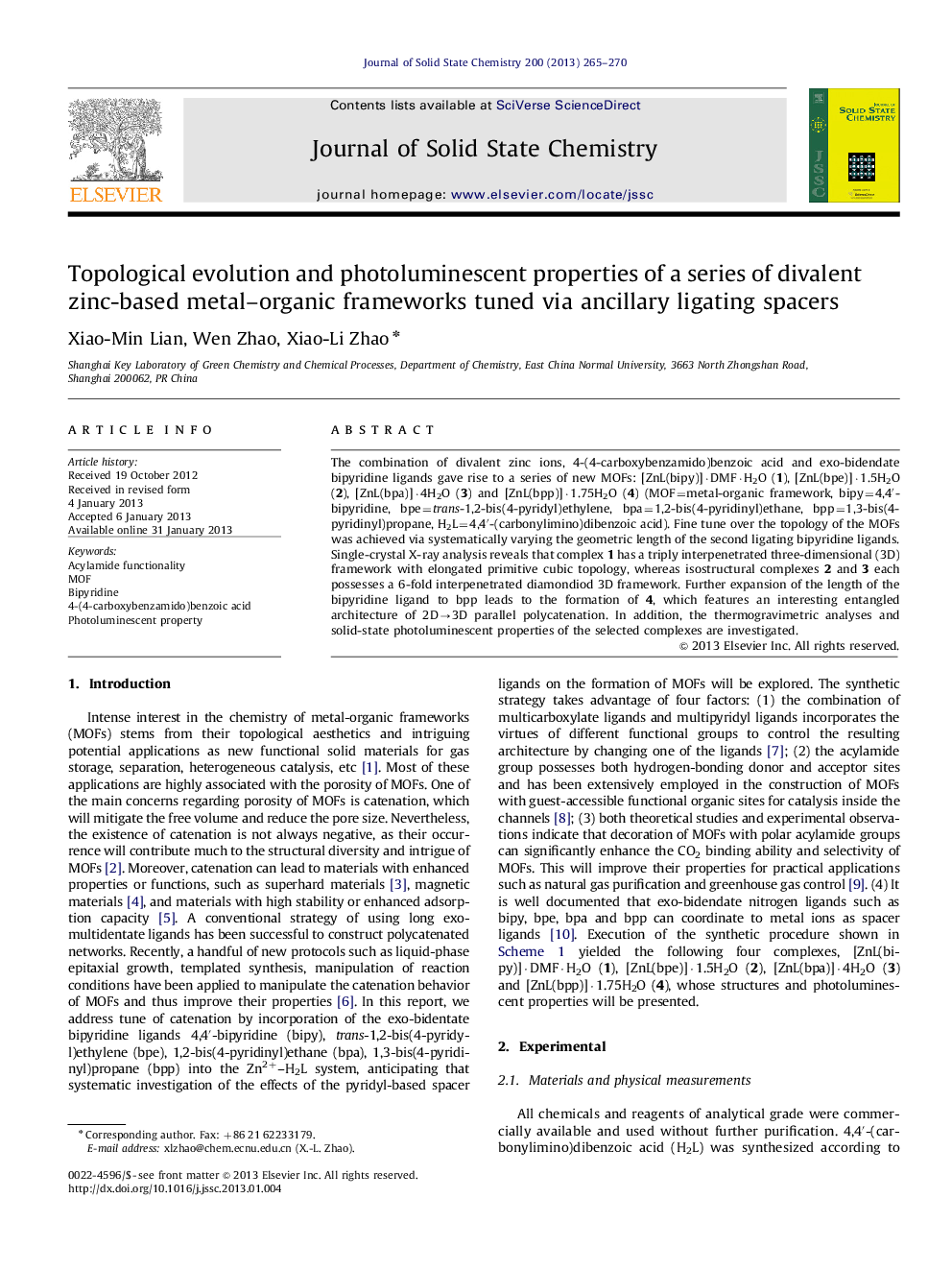| Article ID | Journal | Published Year | Pages | File Type |
|---|---|---|---|---|
| 1331220 | Journal of Solid State Chemistry | 2013 | 6 Pages |
The combination of divalent zinc ions, 4-(4-carboxybenzamido)benzoic acid and exo-bidendate bipyridine ligands gave rise to a series of new MOFs: [ZnL(bipy)]·DMF·H2O (1), [ZnL(bpe)]·1.5H2O (2), [ZnL(bpa)]·4H2O (3) and [ZnL(bpp)]·1.75H2O (4) (MOF=metal-organic framework, bipy=4,4′-bipyridine, bpe=trans-1,2-bis(4-pyridyl)ethylene, bpa=1,2-bis(4-pyridinyl)ethane, bpp=1,3-bis(4-pyridinyl)propane, H2L=4,4′-(carbonylimino)dibenzoic acid). Fine tune over the topology of the MOFs was achieved via systematically varying the geometric length of the second ligating bipyridine ligands. Single-crystal X-ray analysis reveals that complex 1 has a triply interpenetrated three-dimensional (3D) framework with elongated primitive cubic topology, whereas isostructural complexes 2 and 3 each possesses a 6-fold interpenetrated diamondiod 3D framework. Further expansion of the length of the bipyridine ligand to bpp leads to the formation of 4, which features an interesting entangled architecture of 2D→3D parallel polycatenation. In addition, the thermogravimetric analyses and solid-state photoluminescent properties of the selected complexes are investigated.
Graphical abstractThe incorporation of exo-bidendate bipyridine spacers into the Zn–H2L system has yielded a series of new MOFs exhibiting topological evolution from 3-fold interpenetration to 6-fold interpenetration and 2D→3D parallel polycatenation.Figure optionsDownload full-size imageDownload as PowerPoint slideHighlights► The effect of the pyridyl-based spacers on the formation of MOFs was explored. ► Fine tune over the topology of the MOFs was achieved. ► An interesting structure of 2D→3D parallel polycatenation is reported.
